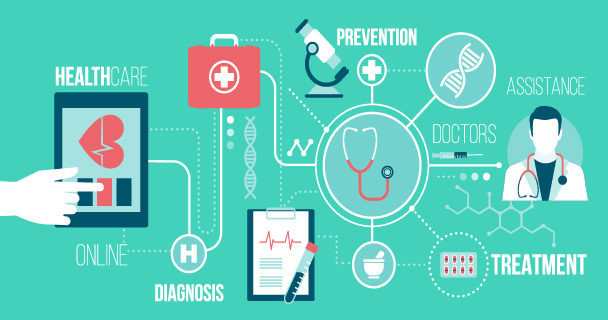blog


For patients, the exam room is one of the most important touch points on the patient experience continuum. Physicians looking to deliver a superior patient experience must take the time to evaluate how they communicate and commit to practicing new ways of speaking to patients. Following a step-by-step communication model will help physicians insure that they are addressing a patient’s needs throughout the visit, even in the most challenging situations. One such model is called RELATE™, which stands for Reassure, Explain, Listen, Answer Questions, and Take Action, and Express Appreciation.
Help Physicians Create Successful Communication Patterns
Physicians have many opportunities to have a positive interaction with the patient. The RELATE™ model walks them through each step with helpful conversation starters and nonverbal language. These are specific phrases called Words that Work, along with behaviors and body language, that help form a strong, emotional connection with the patients, their families and staff members.
10 Tips to Help Physicians RELATE to Their Patients
Reassure
1. Smile. Introduce yourself to everyone in the room. Use good eye contact.
2. Shake hands whenever appropriate.
3. Ask permission to sit down.
4. Use words like “reassure, comfort, and concern.”
5. Discuss reason for the visit. “I see that you are here for…” rather than, “What is the reason for your visit?”
Explain
6. Discuss the care plan in easy to understand terms.
7. Narrate your care; tell what you are doing and why.
Listen/Answer Questions
8. Listen carefully and ask “What questions do you have?” rather than, “Do you have any questions?” Clarify for understanding.
Take Action
9. Provide easy to understand follow-up instructions and orders for referrals, test orders, instructions and next steps.
Express Appreciation
10. Patients always have a choice. Thank you goes a long way.
While physicians have made progress in improving the patient experience in hospitals and other care settings, the time has come to focus on building excellence in their own backyard. It is time for practice leaders and physicians to create a new patient-centered culture for the entire physician practice. It involves more than pushing out new programs and rules. Practices must create their own personal vignette about why the patient experience is important to them. In doing so, they create an opening to a new way of relating to patients that makes sense and blends in with patient care practices and other quality goals. Ultimately, a successful patient experience strategy starts from the inside out.
HealthStream’s learning management system and healthcare training solutions support medical training initiatives and allow for the best patient care.
View All Learning & PerformanceExpand the decision-making skills and effectiveness of your healthcare workforce with HealthStream's workforce development programs and services.
View All Clinical DevelopmentComprehensive, industry-leading provider onboarding and credentialing software that validates health outcomes and supports provider assessment.
View All CredentialingMake sure your healthcare staff can schedule out appointments and work schedules with ease using our line of nurse scheduling software solutions.
View All SchedulingWhen you enact HealthStream's quality compliance solutions, you can do so with the confidence your healthcare organization will meet all standards of care.
View All Quality & ComplianceUtilize patient access solutions and advanced reimbursement solutions to manage clinical denials and improve your organization’s reimbursement strategy.
View All ReimbursementLearn about our advanced resuscitation training solutions. Our solutions are designed to help improve patient outcomes.
View All Resuscitation